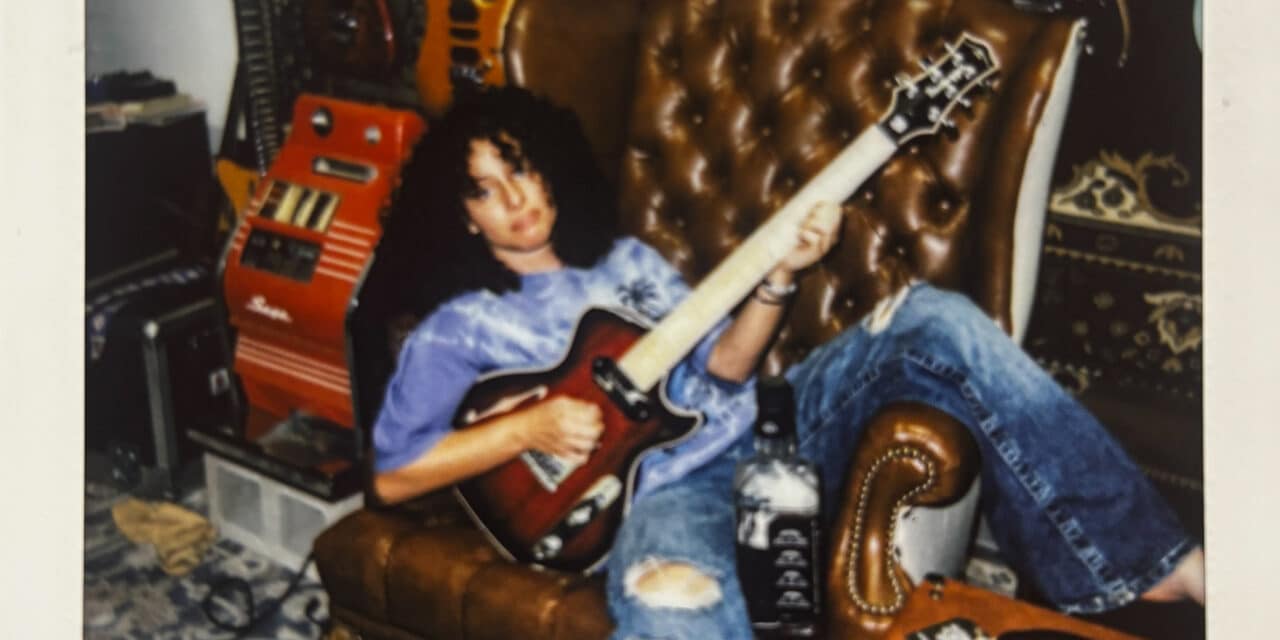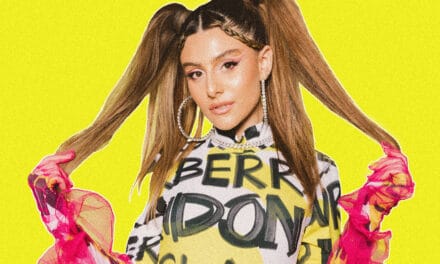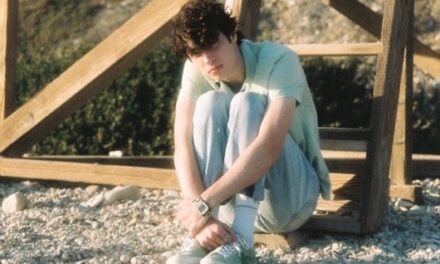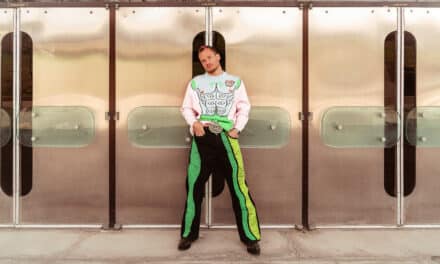Some artists sharpen their sound by subtraction. Sera Fae does it by colliding worlds until sparks fly. The Redondo Beach-raised guitarist, producer, and songwriter has stepped out of the background and into her own light with “somewhere nice.” — a track that feels like you threw grunge, shoegaze, glitch-core, and R&B into a washing machine and let it spin until something entirely new pulsed out of the rinse cycle.
Think beabadoobee, Cherry Glazer, St. Vincent, Mk.Gee, and brakence—but blurred, stretched, and reassembled into a singular, raw presence that’s distinctly hers.
Breaking Away, Breaking Through
After years of being “somebody’s guitarist,” Sera Fae has claimed center stage. “somewhere nice.” marks the first single from her upcoming EP, due next year, and with it she sets the tone: uncompromising, curious, and emotionally charged. The track isn’t just a song—it’s a manifesto of independence, a refusal to stay tucked behind the spotlight when the stories she wants to tell demand the front line.
Building Femme Space
But for Fae, the music is inseparable from the mission. A self-proclaimed feminist, she’s deeply fascinated by the ways sex and music intertwine, and how sound can carve out spaces of agency and safety for women and femme-identifying artists. “I’m always working to create a femme space for artists,” she explains—a commitment that aligns seamlessly with the values of Mundane and its orbit of voices who refuse to let the industry’s old rules dictate their future
The Sound of “somewhere nice.”
What emerges is a sonic paradox: glitchy yet smooth, raw yet carefully sculpted. Guitars crash against shimmering layers, vocals hover between confession and confrontation, and the result is something that feels at once familiar and alien. It’s music you can sink into, but it doesn’t let you off easy—it keeps you awake, alert, questioning.
What’s Next
With “somewhere nice.” opening the door, Sera Fae’s upcoming EP promises to further explore the edges where genres bleed and identities collide. It’s an arrival moment, but also a declaration: she’s here not just to add to the conversation, but to rewire it.
For listeners craving music that’s equal parts fierce, femme, and forward-thinking, Sera Fae isn’t just on your radar—she is the radar.
“somewhere nice.” is such a compelling title—where does that place exist for you, and how did it shape the sound and story of the track?
“Somewhere Nice,” within the context of the song, is more ironic and conceptual. While writing, I imagined myself as a teacher in the suburbs, living the good ol’ American Dream – one kid and a husband in tow. But even in that fantasy, which feels less attainable every day for many people, I’d still be wondering what life would look like if I had pursued music – if I hadn’t given up on myself, if I had just pushed a little harder. Then it’s not really a nice place anymore, is it? My mom and dad are two wonderful people who just want to see how far I can run, how far I can take this music thing. I think it would be a disservice to them to just give up, settle down ‘somewhere nice’ and never take a chance.
Your sonic recipe—grunge, shoegaze, glitch-core, and R&B—sounds like chaos on paper but feels fluid in your music. How do you navigate blending genres without losing your core voice?
I put very specific limits on myself when creating my EP. No matter what I did, it had to fit squarely within the rock genre – unambiguously. The other rule was that I could only use and manipulate instruments from a typical four piece rock band: guitar, bass, voice, and drums. With those limits in place, I was able to weave in bits and pieces of so many of my influences – J Dilla, Charli XCX, Janet Jackson, Title Fight, D’Angelo, even Burna Boy and Pop Smoke – without losing the core of what I’m doing.
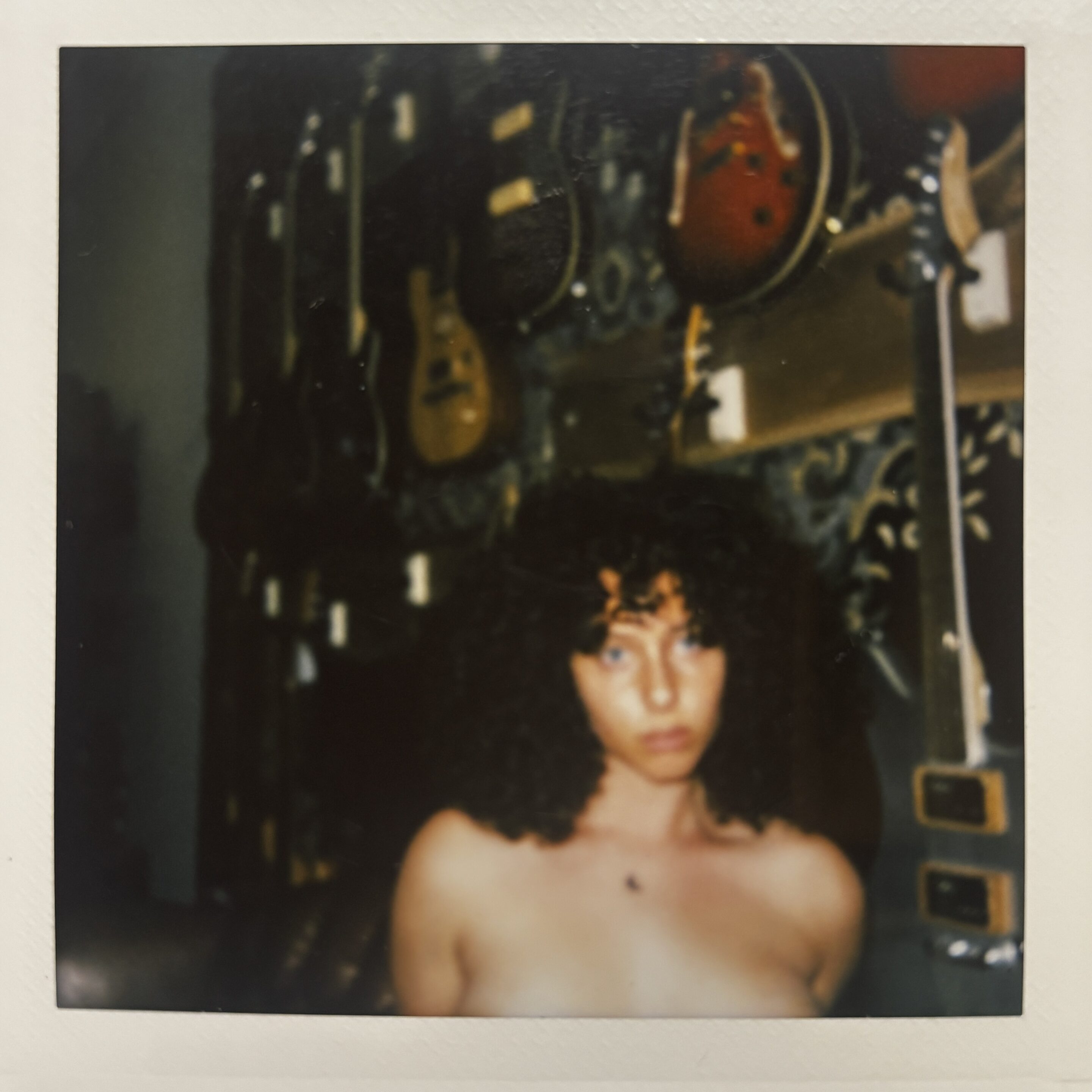
You’ve been a guitarist for other people for a long time. What’s been the most liberating (and maybe terrifying) part of stepping out as Sera Fae in your own right?
Honestly, I love being able to dress however I want. It might sound silly, but when you work for others, you have to adapt – be a chameleon, even in your playing. Of course being a chameleon is its own kind of artistry too, and I deeply respect touring musicians who bring an artist’s vision to life. I do it too sometimes, and it’s fun to be part of the crew. That being said, what I love about Sera Fae is that it’s entirely my world – a space for my voice, production, ideas, and opinions, completely unfiltered. I am the captain now. The scary part is that I don’t gig as much or collaborate on others’ projects anymore, so the responsibility is entirely mine. If I fail, it’s on me. If I succeed, it’s on me. But that risk feels worth it.
You describe yourself as a feminist fascinated by the relationship between sex and music. How does that exploration show up in your songwriting and production?
I think the idea of “sex” as a commodity shows up in my music more than sex itself. With social media and performing, I’ve grown used to being watched – not just judged, but sexualized, turned into someone’s fantasy. “Girl who plays guitar” is a long-standing sexual trope, and I can’t ignore that reality. For women, becoming a public figure often means becoming someone’s masturbation material. I think often about Margaret Atwood’s idea that everything is a male fantasy. As I build my visual brand, I keep the old entertainment adage in mind: “the audience must want to be you or in you.” It still rings true – even for men to a lesser extent. I think many female musicians, whether they wanted to or not, function as collective fantasies defined by their time. That said, I love that sex is becoming more open and celebrated beyond straight male fantasies. Queer and female-focused celebrations of pleasure deeply inspire me on a personal level – sex exists for everyone, regardless of identity. I admire artists who embrace being sex symbols and lead with freedom and pleasure. My struggle is that it often feels like I don’t have a choice – I have to be a sex symbol to some degree. That’s something I hope evolves as I get older.
Building femme spaces in music is still radical. What does that space look like to you—sonically, emotionally, and communally?
God, one of the most exciting things about building a femme and female-inclusive space is that I have no idea what it will sound like! Women – cis, trans, and non-binary people – are so diverse in experience that it could create a sound we’ve never heard before. BIPOC women remain the least represented and protected in this industry. While there’s broader female representation among singers and songwriters, producers and instrumentalists are still rare. Imagine albums created mostly by non-men. That would create a culture we’ve never seen. I can feel it. I desperately want to see more queer and female instrumentalists and producers, a real community that exists in and out of the studio – filled with every kind of woman and non-binary person. A community of equals, collaborating as a team toward a shared vision. When I create, I actively seek out women and queer/femme collaborators to help build that world. For example, this song was written, performed, and produced by me, with background vocals written by Sintoria and mixed by Elanna Carroll. Every step was touched by a woman, and I want all my collaborations to reflect that.
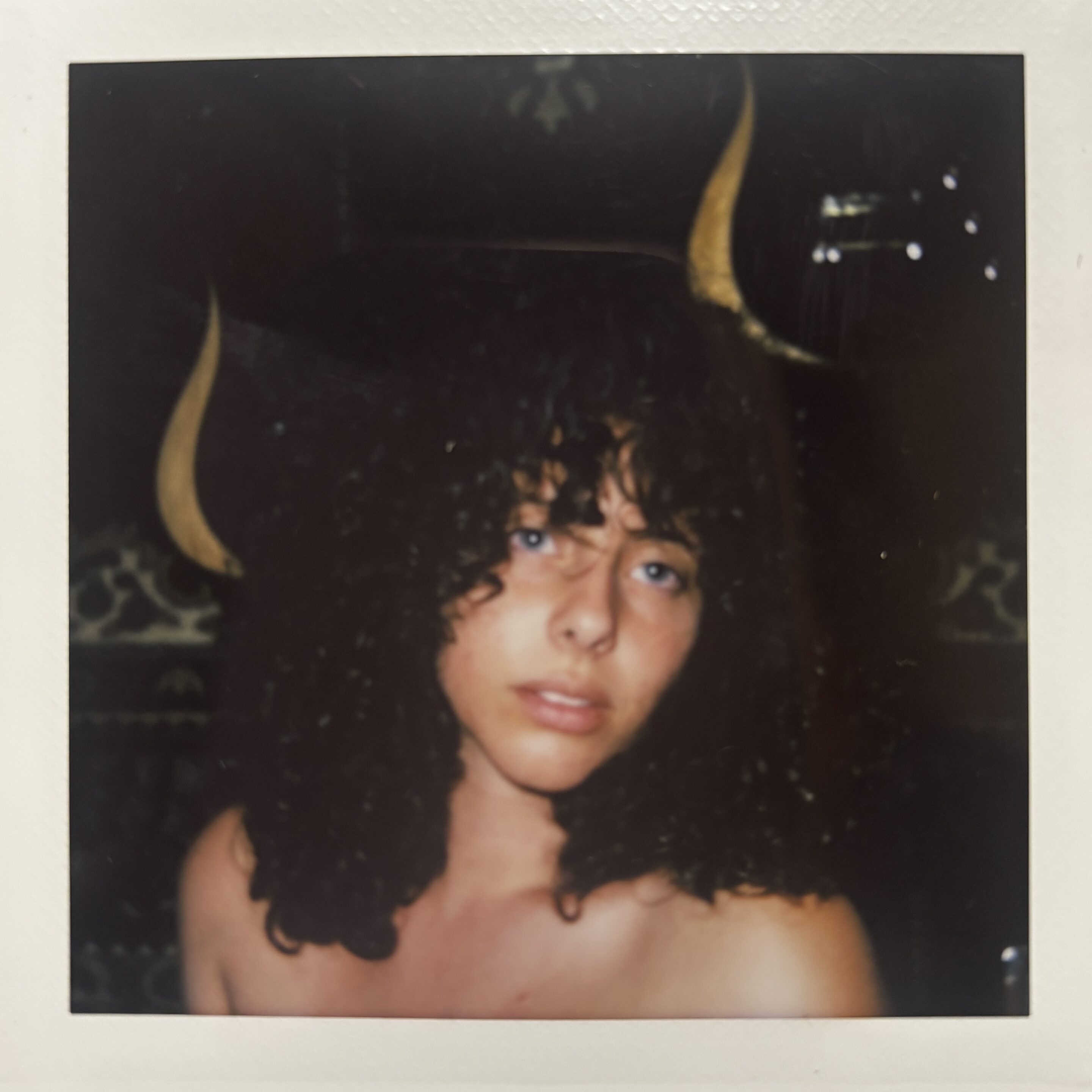
Your reference points—beabadoobee, Cherry Glazerr, St. Vincent, brakence, Mk.Gee—are wildly different but all disruptors in their own lane. Who do you feel the deepest kinship with, and why?
It’s funny you ask. When it comes to kinship, I actually feel closest to Prince, and that’s new. Sonically, I’m very different, and honestly, if I ever even came within 100 miles of his mastery, I’d be complete. The artists I listed influence my sound in technical and specific ways, but I don’t necessarily feel a kinship with them. Though I think the connection of disruption is interesting and suits me well. When I think of who I want to be, it’s like Prince – not in look or sound, but in what he represents: an absurdly gifted individual who surrounded himself with equally talented women, played every instrument at a masterful level, and produced records so layered they’re confounding to recreate. He created a sound no one had heard before and harnessed it across a decades-long career spanning from funk to jazz. There’s a philosophy to him that I’m still uncovering and deeply admire. He was a once-in-a-lifetime musician. If I can work hard enough to achieve even a fraction of that – something uniquely mine – I’ll be satisfied, even if it sounds nothing like what he would’ve done.
There’s a lot of grit and tenderness in your influences. Do you see your EP as leaning heavier into distortion and chaos, or more toward intimacy and vulnerability?
Definitely distortion and chaos. There’s always going to be intimacy and vulnerability in my lyrics, because that’s what makes it all come together for me. But distortion and chaos is what makes it fun. And fun is extremely necessary to my music.
Redondo Beach is a strange backdrop for glitchy shoegaze grunge. How does your environment—California, the ocean, suburban sprawl—creep into your sound?
When I listen to Nirvana’s music there’s a kind of “laissez-faire” aspect to their sound I think is crucial. The pocket is so wide. Maybe living close to the ocean helps me tap into that relaxed feel, I’m not sure. I don’t feel much connection to where I live. If anything I think it isolates me because I hardly know any South Bay musicians, and that isolation has given me the space to really find the core of what I’m doing. Honestly, maybe the real grunge comes from LA road rage, since I’m always driving to people.
Collaboration has been your world for years as a guitarist. When you write just for yourself, do you find freedom—or do you miss the friction of bouncing off other artists?
This project was absolute hell to make. I wrote countless songs, tormenting myself over the same loops until the world I was creating felt exactly right. Recording vocals was even worse—each lead took one to two weeks. I was so exhausted I asked two friends to handle the background vocals. I missed collaborating. I produced this project to force myself to find who I am. I didn’t know myself well enough to work with others consistently; I had to find my freedom before I could wield it. I’m big on not wasting people’s time, and the idea of discarding someone’s contribution felt disrespectful. So I isolated myself, found my vision, and now I’m excited to add collaborators. That’s my next big step.
Looking ahead, what do you want listeners—especially femme and queer communities—to take away from “somewhere nice.” and the EP that follows?
If you’re chasing a dream and keep shrinking it because the industry ignores or exploits you, because you have to make TikToks every damn day when you hate it, because of imposter syndrome, because becoming an artist feels more like pay-to-play with each passing day, because you don’t network enough, because you’re your own manager, merch designer, web designer, publicist, and label, because rent is too damn high, or because the political landscape is completely fucking absurd – or literally anything else – you’re not alone. And please, don’t keep shrinking.

